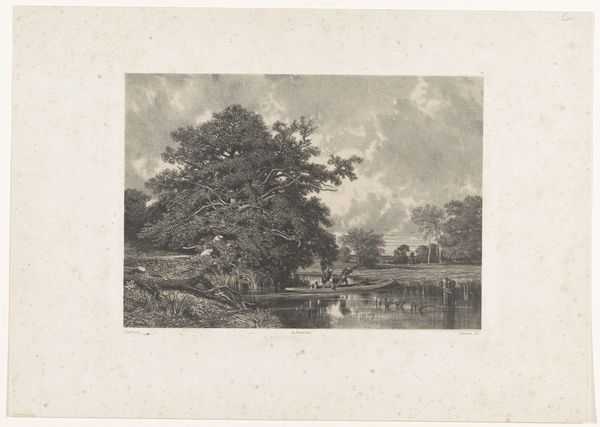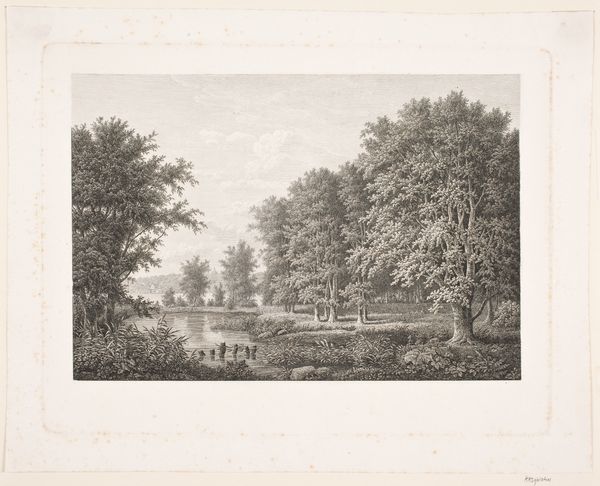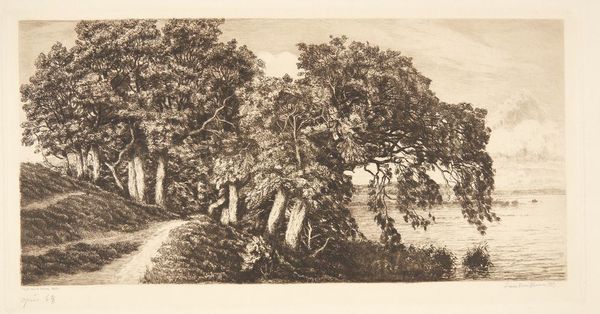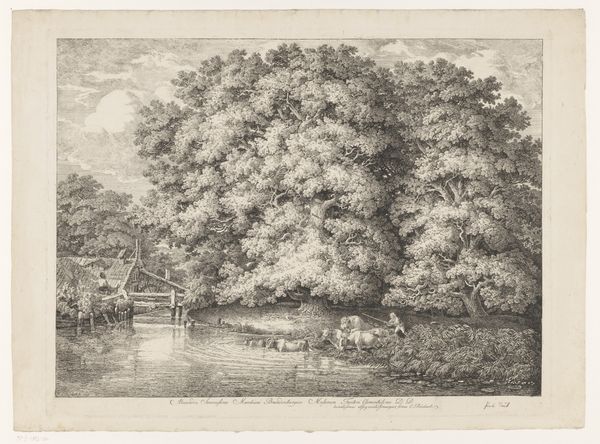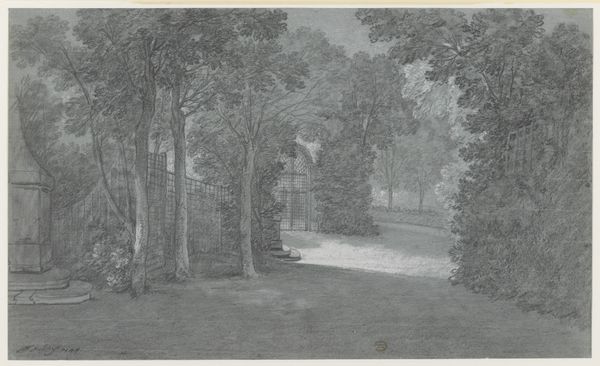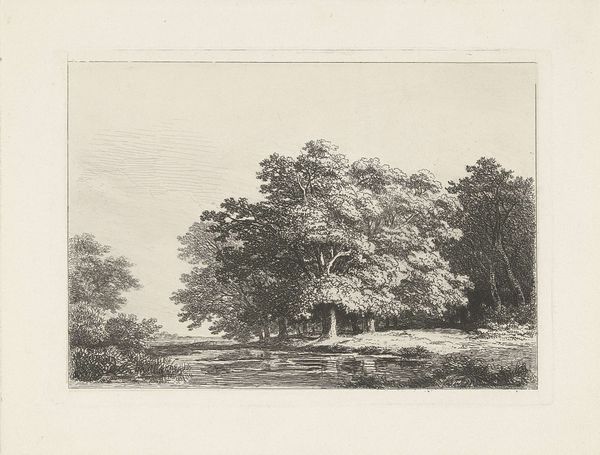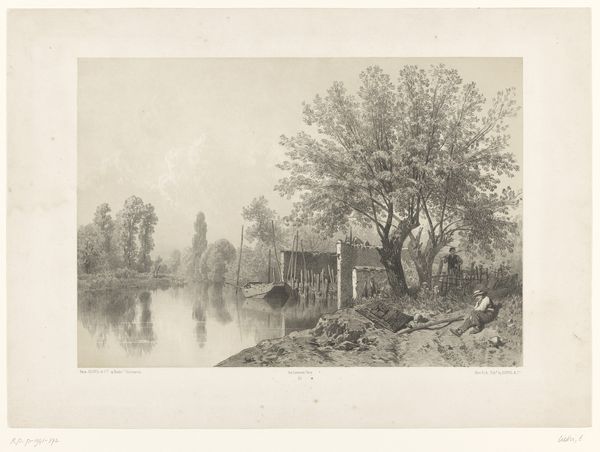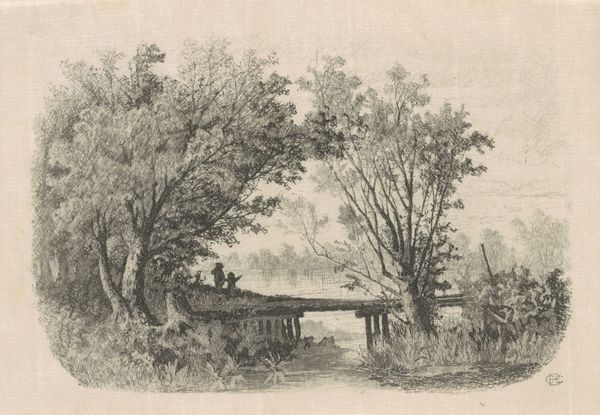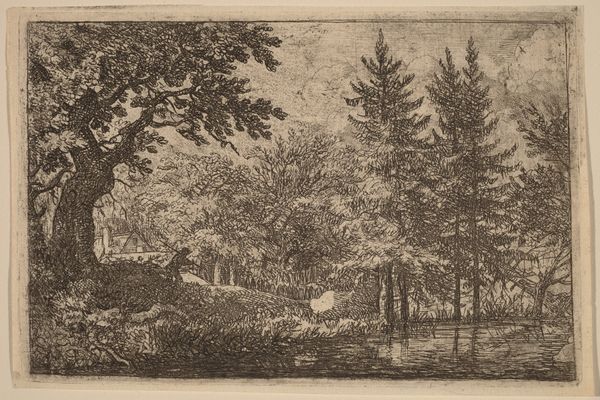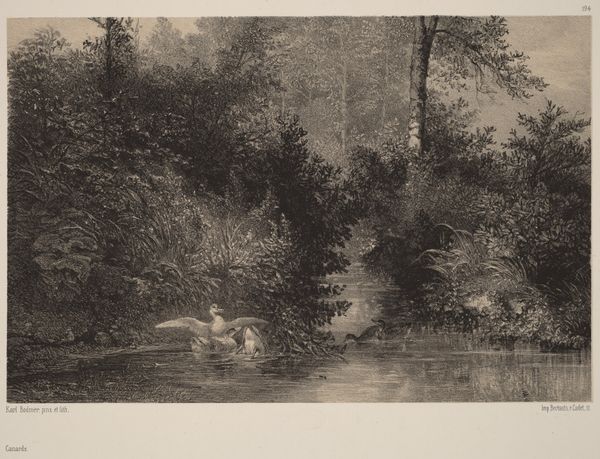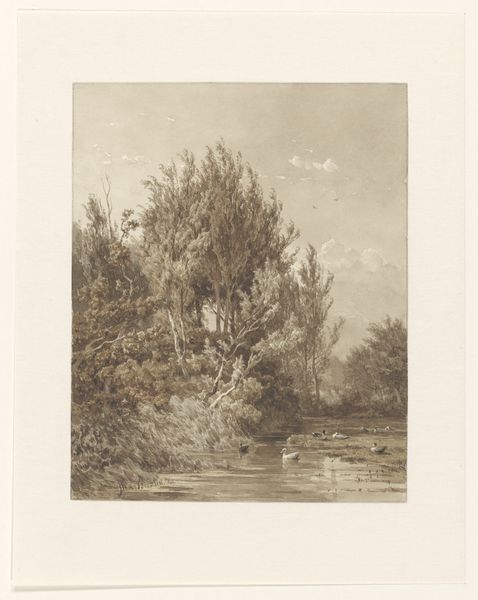
print, engraving
# print
#
old engraving style
#
landscape
#
academic-art
#
engraving
#
realism
Dimensions: height 517 mm, width 670 mm
Copyright: Rijks Museum: Open Domain
This landscape scene of a watermill by a large oak is an etching, meaning the artist would have covered a metal plate with a waxy, acid-resistant substance, scratched the design into it, then bathed the plate in acid. The acid bites into the exposed metal, creating lines that hold ink. This printmaking technique is inherently collaborative, as the etcher relies on the skilled labor of the printer to bring their design to life on paper. Look at the subtle variations in tone achieved through the manipulation of line and texture, a testament to the etcher’s skill in capturing the nuances of light and shadow. The technique suggests a burgeoning manufacturing era, where the division of labor enabled more streamlined production. Etchings like these were often made for mass consumption, catering to a growing middle class eager to adorn their homes with affordable art. This challenges the traditional hierarchy between fine art and decorative crafts, highlighting the role of printmaking in democratizing access to art and shaping popular taste.
Comments
No comments
Be the first to comment and join the conversation on the ultimate creative platform.

